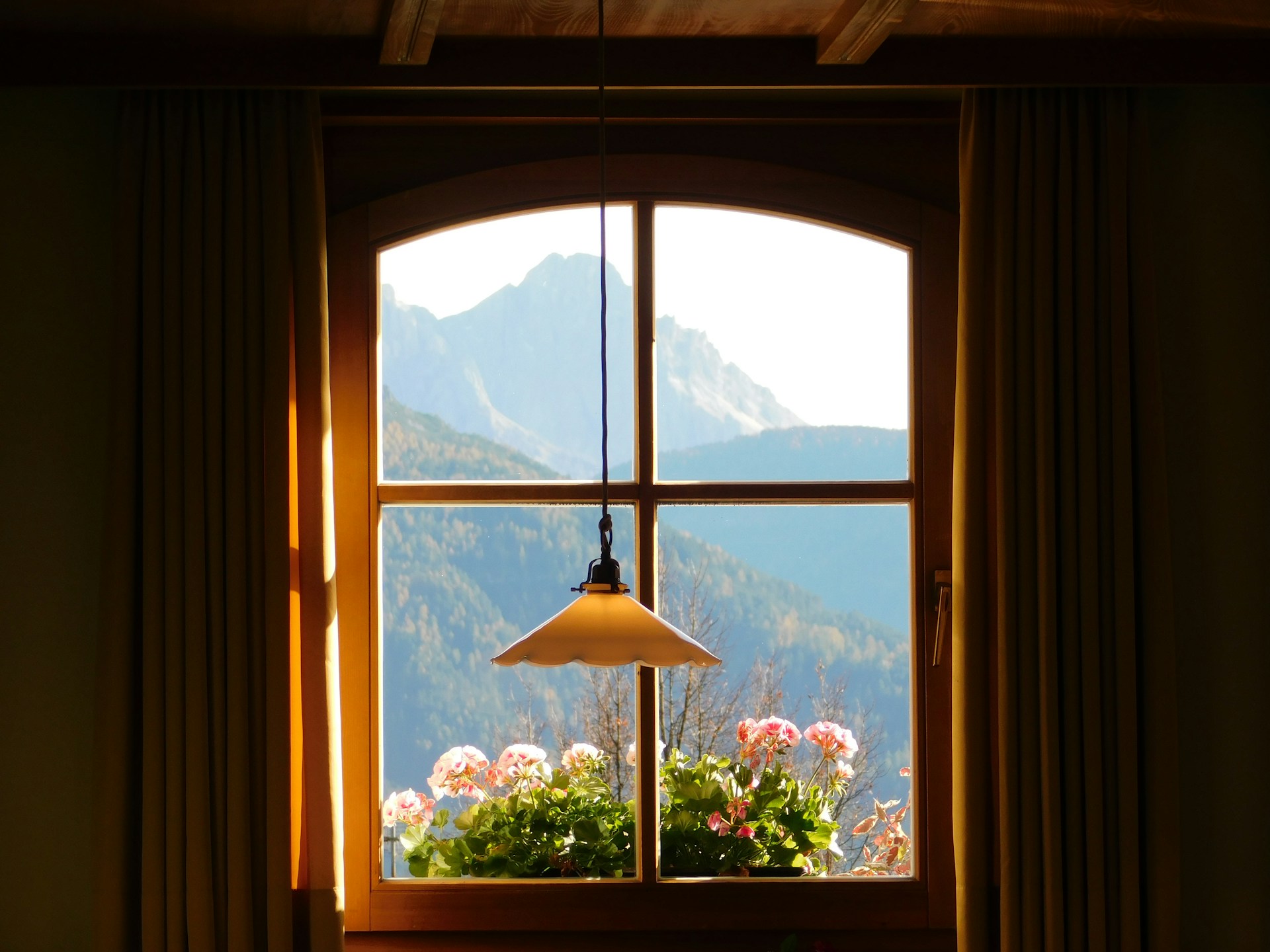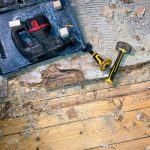Victorian homes possess unique charm and character, but they often lack modern energy efficiency. Upgrading windows can significantly impact your home's energy consumption, comfort, and aesthetics. This guide empowers UK homeowners to make informed choices about energy-efficient windows that complement their period properties. Discover the benefits of various materials, styles, and technologies, ensuring your home remains warm and welcoming while respecting its historical essence. Embrace sustainability without sacrificing beauty.
Understanding Energy Efficiency in Windows
Energy efficiency in windows is crucial for maintaining comfortable indoor temperatures and reducing energy consumption. Energy efficiency ratings provide a standardised measure of a window's ability to prevent heat transfer. These ratings are often based on factors such as U-value, Solar Heat Gain Coefficient (SHGC), and Visible Transmittance (VT).
A découvrir également : Choosing the Perfect Underfloor Heating Solution for Your UK Cottage: A Comprehensive Guide
Window performance is significantly influenced by its insulation properties. Insulation acts as a barrier to heat flow, keeping heat inside during winter and outside during summer. This is achieved through materials like low-emissivity (Low-E) coatings, gas fills between glass panes, and thermally broken frames. These features enhance the window's ability to maintain a stable indoor climate.
Selecting windows with high insulation qualities can lead to substantial savings on energy bills. Poorly insulated windows allow unwanted heat transfer, causing heating and cooling systems to work harder, thus increasing energy consumption. By investing in windows with superior energy efficiency ratings, homeowners can reduce their reliance on HVAC systems, leading to lower utility costs.
A découvrir également : Find your ideal insulated cup with straw for every sip
In summary, understanding the importance of insulation and window performance is vital for making informed decisions that enhance energy efficiency, comfort, and cost-effectiveness in homes.
Types of Energy-Efficient Windows
When considering energy-efficient windows, understanding the differences between single, double, and triple glazing is essential. Single-glazed windows consist of one pane of glass, offering minimal insulation. In contrast, double glazing includes two panes separated by a space filled with air or inert gas, significantly improving insulation. Triple glazing adds a third pane, further enhancing thermal performance and noise reduction.
Benefits of Low-Emissivity Glass
Low-emissivity (Low-E) glass is a critical component in energy-efficient windows. This type of glass features a microscopic coating that reflects heat while allowing light to pass through. By doing so, it reduces heat loss in the winter and heat gain in the summer, contributing to a more stable indoor environment.
The Role of Window Frames
Window frames also play a pivotal role in energy efficiency. Materials such as vinyl, wood, and fibreglass offer different levels of insulation. For example, vinyl frames are known for their durability and low maintenance, while fibreglass frames provide excellent thermal resistance. Choosing the right frame material can complement the insulating properties of double or triple glazing, resulting in optimal energy savings.
Benefits of Energy-Efficient Windows
Energy-efficient windows offer numerous advantages, particularly in terms of energy savings. These windows are designed to minimise heat transfer, which can lead to significant reductions in heating and cooling costs. By maintaining a consistent indoor temperature, they reduce the need for constant HVAC system adjustments, resulting in long-term cost savings on energy bills.
Beyond financial benefits, energy-efficient windows contribute to enhanced comfort within the home. By effectively regulating indoor temperatures, these windows create a more stable environment, preventing drafts and cold spots during winter and excessive heat during summer. This improved temperature regulation ensures a more pleasant living space year-round.
Moreover, the environmental impact of energy-efficient windows is substantial. By lowering energy consumption, these windows help reduce greenhouse gas emissions associated with electricity production. This contributes to a more sustainable living environment and supports global efforts to combat climate change.
In summary, energy-efficient windows provide a trifecta of benefits: they offer considerable energy savings, improve home comfort, and positively impact the environment. Investing in these windows is a practical step towards a more sustainable and cost-effective lifestyle.
Installing Energy-Efficient Windows
Installing energy-efficient windows is a crucial step towards enhancing your home's energy performance. The installation process involves several key steps to ensure optimal performance and longevity. Initially, precise measurements of the window openings are taken to guarantee a snug fit, preventing air leaks. Following this, the old windows are carefully removed, and the new energy-efficient windows are installed, ensuring they are level and properly sealed.
The importance of hiring professional installers cannot be overstated. Certified professionals bring expertise and experience, ensuring that each step is executed with precision. They understand the nuances of different window types and can tackle any unforeseen challenges that may arise during installation. This expertise not only ensures a proper fit but also maximises the energy-saving potential of the windows.
For those considering a DIY approach, there are several tips to keep in mind. It's crucial to have the right tools and materials on hand, such as caulk and weather-stripping, to ensure a tight seal. Additionally, watching tutorial videos or reading detailed guides can provide valuable insights into the process. However, it's important to assess your skills honestly, as improper installation can lead to reduced energy efficiency and potential damage.
Compatibility with Victorian Architecture
Victorian homes are renowned for their intricate designs and historical charm, making architectural integrity a priority when considering upgrades. Maintaining this integrity involves selecting window designs that align with the home's original style. Victorian architecture typically features bay windows, sash windows, and stained glass, each contributing to the home's unique character.
When choosing energy-efficient windows for Victorian homes, it's crucial to ensure they complement these traditional architectural styles. Sash windows, for instance, can be updated with double or triple glazing to enhance insulation without compromising their classic appearance. Similarly, stained glass can be preserved or replicated using modern techniques that incorporate energy-efficient materials.
Balancing modern efficiency with traditional aesthetics requires careful aesthetic considerations. Homeowners can opt for windows with wood or wood-like finishes that mimic the original materials used in Victorian times. These finishes not only maintain the home's historical appearance but also offer improved insulation properties.
In summary, selecting energy-efficient windows that respect the architectural integrity of Victorian homes involves a thoughtful approach. By prioritising designs that suit the home's style, homeowners can enjoy the benefits of modern efficiency while preserving the traditional beauty of their Victorian architecture.
Cost Considerations for Energy-Efficient Windows
When planning for energy-efficient windows, understanding window pricing is crucial. The average cost of these windows varies widely based on several factors, including the type of glazing, frame material, and any additional features like Low-E coatings. Double-glazed windows typically range from £400 to £1,200 per window, while triple glazing can increase costs significantly.
Budget planning is key to managing these expenses effectively. It involves evaluating not just the upfront costs of the windows themselves but also the potential savings on energy bills over time. Consider the financial investment as a long-term strategy that can enhance your home's value and comfort.
Several factors influence window pricing, such as the size and style of the window, frame material, and installation complexity. Custom designs or windows for unique architectural styles may also incur higher costs.
When budgeting for installation, it's important to account for potential hidden costs. These can include structural modifications, disposal of old windows, and any necessary permits. Allocating funds for professional installation can also ensure the windows perform optimally, maximising your investment's benefits.
Funding and Incentives for Energy-Efficient Upgrades
Navigating the landscape of funding and incentives for energy-efficient upgrades can be daunting, yet it's crucial for homeowners aiming to enhance their property's efficiency. Various grants and financing options are available to ease the financial burden.
Government incentives play a pivotal role in promoting energy-efficient home improvements. These schemes often provide financial support or tax credits to homeowners who install energy-efficient windows or undertake similar upgrades. Such incentives are designed to encourage sustainable practices and reduce overall energy consumption.
In addition to government schemes, there are numerous financing options tailored for energy-efficient upgrades. Homeowners can explore loans specifically intended for eco-friendly renovations, often featuring lower interest rates or flexible repayment terms. These options make it feasible for more individuals to invest in energy efficiency without upfront financial strain.
Furthermore, local councils and environmental organisations may offer specific grants to support energy-efficient projects. These grants can significantly offset the costs associated with installing energy-efficient windows, making the investment more accessible.
By leveraging these funding opportunities, homeowners can make informed decisions that align with both their financial and environmental goals, ultimately enhancing the value and comfort of their homes.
Case Studies and Real-Life Examples
Exploring success stories and homeowner experiences offers valuable insights into the real-world impact of energy-efficient windows. One notable case study involves a Victorian home in Sussex, where the owners undertook a comprehensive window upgrade. By replacing outdated single-glazed windows with modern double-glazed alternatives, they achieved significant energy savings. The homeowners reported a 30% reduction in their annual heating costs, highlighting the effectiveness of improved insulation.
Another compelling example comes from a family in Manchester who invested in triple-glazed windows. Their testimonial emphasised not only the financial benefits but also the enhanced comfort levels within their home. The reduction in external noise and the elimination of cold drafts were particularly appreciated during the winter months.
These real-life examples demonstrate the potential for energy-efficient windows to transform living spaces. Homeowners consistently report lower energy bills and improved indoor climates. Such testimonials underscore the practicality and long-term benefits of investing in energy-efficient solutions.
In summary, these case studies and testimonials provide concrete evidence of the substantial advantages that energy-efficient windows bring. They serve as inspiration for others considering similar upgrades, showcasing the tangible results of enhanced window performance.
Visuals and Resources for Homeowners
Understanding the myriad of window options available can be daunting. Visual guides play a crucial role in simplifying this process, offering homeowners a clear representation of different window types and their features. These guides can illustrate the distinctions between single, double, and triple glazing, as well as showcase the benefits of low-emissivity glass and various frame materials.
Infographics are particularly effective in summarising the advantages of energy-efficient windows. They can visually depict the potential energy savings, enhanced comfort, and environmental benefits these windows provide. By presenting information in a visually appealing format, infographics make it easier for homeowners to grasp complex concepts and make informed decisions.
Access to installation resources is equally important. Homeowners should seek out reputable suppliers and installers who can guide them through the selection and installation process. These professionals can offer expert advice on the best window options for specific architectural styles and climate conditions.
By utilising visual guides and infographics, homeowners can better understand their window choices. Coupled with reliable installation resources, these tools empower individuals to enhance their home's energy efficiency effectively.
Conclusion and Further Reading
Exploring energy-efficient windows can be a transformative journey for homeowners. This guide has delved into the nuances of window types, insulation technologies, and installation practices, all aimed at enhancing energy efficiency. For those eager to deepen their understanding, a wealth of additional resources is available.
Homeowner guides offer practical advice tailored to specific needs and circumstances. These guides often include comprehensive checklists and decision-making frameworks, helping homeowners choose the right windows for their architectural style and climatic conditions.
For a more technical perspective, expert articles provide in-depth analyses of energy efficiency technologies and industry trends. These articles often highlight advancements in materials and design, offering insights into future developments in window technology.
To further explore these topics, consider consulting additional resources such as industry reports and case studies. These documents can provide valuable data and real-world examples of successful implementations, showcasing the tangible benefits of energy-efficient windows.
By engaging with these resources, homeowners can make informed decisions that align with both their financial and environmental goals, ensuring a comfortable and sustainable living environment.
















